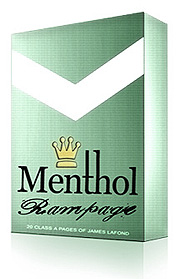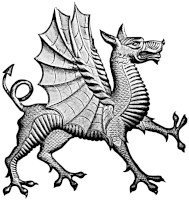The hoplite, or heavy foot soldier of archaic through Hellenistic Greece, was so named for his Hoplon, a concave oblong arm-strapped shield as depicted in the illustration at the head of this chapter. By the Classical Period from roughly 525 B.C. on, the hoplon had been wholly supplanted by the more ergonomic aspis. However, the term hoplite stuck like glue.
The hoplon is better suited for single combat using spears and javelins at close and mid range than the other large shields. It makes only a fair pairing with swords and daggers. Most importantly, in the press of mass combat the hoplon does not interlink as well with the shields of companions, cannot be as easily thrust under or over, and is not as good for close range punching and pushing as the aspis.
The armor of the hoplite varies. The more well-to-do communities will have bronze breast plate and back plate, with the poorer using quilted vests with reinforcing strips of cured leather. All hoplites will have bronze greaves for the shins and helmets for their heads. The grieves have open clasps that press around the calve muscle, rather than am strap and buckle arrangement favored by later militaries, indicating that the hoplite did not march with his grieves on, but totted them, probably in the belly of his aspis, or on the back of his slave.
The helmets do not have linings, rather the warrior relies on his hair as a helmet liner, which must make the older balding hoplite’s head ring the louder when struck on top in battle. The Spartans—being professional warriors—grew their hair long to achieve a better more padded fit. There were five major types of helmets, with the ‘Corinthian’ version being the one we most commonly think of. This helmet design favors the kinky haired man.
These helmets are good against pointed missiles, spears, and slashing swords but not much protection against blows from the club, axe, shield or heavy chopping blade. Indeed one of the terms for helmet, korus, was clearly related to a term for helmet-defeating weapons: koruni, a club or mace. Such thin-walled, unlined helmets would be no better at absorbing mace and stick blows than a baseball batters shell hat, and far less likely to save the brain and neck from the shock of blunt force than a modern hockey or lacrosse helmet. The design is itended primarily to deflect thrusts and slashes. Helmets with crests do offer additional protection against cleaving blades and clubs, with the ordinary warrior’s crest affixed from front to back and the officer’s side to side.
The aspis is the weapon that defines the hoplite, and is by far his most potent tool, offensively and defensively. The 20 pound bowl shield is arm-strapped with a bronze rim extending beyond the fist and over the shoulder to offer punching and resting functions. This heavy shield does not transfer force to the wrist and has a structure that permits the shoulder muscle to rest while the shoulder joint itself serves as a prop. A thick pad may be worn between the forearm and the inside belly. The body of the shield is of oak, with the rim bronzed, and the face painted. The oak might be bare and lacquered, covered in stretched, tanned and painted animal hide, or even faced with wrought bronze. There would be a personal or community device on the face of an aspis. See the Shield of Achilles in the Iliad for an example of the ultimate aspis. The drawback of the aspis was lack of thigh protection. A leather curtain was sometimes affixed to the bottom rim to address this deficiency.
The Hellenic warrior was a spearman, not a swordsman. His main weapon was the seven foot dory, ideally made of ash and an inch and a half thick. There would be an iron or bronze point and an iron or bronze counterweight and spike. The hoplite’s war dance was an exercise that included changing hand positions from overhand to underhand for stabbing over or under the shield. The leg would be lifted behind the shield sometimes and then stomped down with the thrust of the spear like a superman punch in MMA.
The boagrion, a shield of wild bull’s hide, also known as a figure-of-eight shield, appeared almost as two stacked horseman’s shields. This would be a very heavy duty, rounded and concave version of the Zulu hide shield, made of seven layers of ox-hide. This tradition was retained in the use of leather hand wraps to build boxing gauntlets in the 300s and on, with seven layers of ox-hide used to cover the knuckles. The boagrion will only be found among backward and semi-barbaric warriors, with its use going back into deep antiquity. The warriors of a thousand years earlier used this shield to hunt lions, with the lead man using the shield while his fellows thrust over and around the defensive weapon with heavy spears.
The sakos, was an Ionian wicker-work shield covered with ox-hide, and would be used by some Asiatic Greek hoplites. It did not stand up well against the aspis.
The akontion, or “javelin” was thrown by earlier hoplites of this period either over-handed or underhanded as depicted in the illustration at the head of the chapter. A twisted chord would be used to impart spin to the missile for accuracy. This javelin was heavy and known to pierce armor at close range. Its use among hoplites in the Classical Period will fade, in favor of light troops casting darts, with the hoplite becoming a strictly melee fighter. In this period, however, hoplites might still be expected to use such mid-range weapons. Casting the javelin was a focus of athletic training and competition, it being part of the pentathlon at Olympia from 708 B.C.
The last ditch weapon of the hoplite was the parazonium, a dagger with a broad tapering blade—a miniature aor. Hoplites often carried no sword, just this nasty dagger. Some leading hoplites might carry one of the swords listed in the last chapter and this dagger. The hoplites of Sparta who had their own distinctive small swords, the xyinae or xuelae, would not have much need for this weapon.
The parazonium would also be absent when warriors carried the phasganon or the smaller versions of major sword designs, such as the xiphidion or makhieridon. This author’s thought is the parazonium would be a sidearm carried by hoplites, such as those of the great island of Euobea, who were renowned swordsmen, and most likely fought with the aor, the one sword design that might replace the thrusting spear in the battle line.











